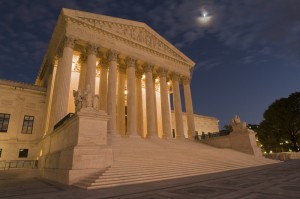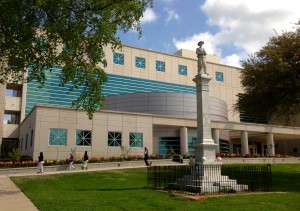News
San Francisco Chronicle Reports Innocent Man’s DNA was Found at Homicide Scene
ShareDNA has been touted as one of the greatest crime-solving technologies to be developed. But using DNA to identify criminal suspects is not without its problems. Many crimes do not yield themselves to being solved by DNA evidence, and the mere presence of DNA evidence without more, tells us very little about whether or not the person whose DNA was found was actually involved in the criminal act.
DNA is trace evidence. It is genetic material that we leave behind whenever we come in contact with an object or another person. The odds of any two persons having the same DNA genetic sequence is extremely high, though not really as impossible as it might seem. So, finding a person’s DNA at the scene of a crime, or on the body of a homicide victim, might seem very strong evi dence indeed that the person whose DNA was found was the perpetrator of the crime. Even more so, if the person had no other connection or contact with the crime scene to explain how his or her DNA might have been left there innocently.
dence indeed that the person whose DNA was found was the perpetrator of the crime. Even more so, if the person had no other connection or contact with the crime scene to explain how his or her DNA might have been left there innocently.
But there are problems. Consider what happened to 26-year-old Lukis Anderson, who was accused of murder after his DNA was found underneath the fingernails of a homicide victim. Henry K. Lee reports in this San Francisco Chronicle article how DNA was transferred from Anderson, who was picked up at a San Jose Liquor Store by two paramedics and taken to a hospital, to the murder victim several hours later when the paramedics were called to the crime scene and handled the body of the victim.
The first problem is that DNA is easily transferred form one surface to the next. Wipe your face with a towel and you leave DNA on the towel. Wipe another object with that same towel, or another person, and your DNA is transferred to the object or person. The second problem is that technology for amplifying DNA is so powerful that DNA profiles can now be obtained from even exquisitely minute traces of genetic material. That makes the risk of contamination of the DNA sample or the surface from which the sample is taken a serious problem. Contamination can lead to the accusation of an innocent person and possibly a miscarriage of justice and wrongful conviction.
When you consider that in the first 200 DNA exonerations by the Innocence Project, three involved wrongful DNA inclusions at trial, you begin to see the magnitude of the problem. Moreover, one can see how it is that DNA, rather than helping to convict the guilty, can actually work to convict the innocent.
Once facing a lifetime in prison, Michael Madden is returning to real life.
ShareHere is the full text to the latest coverage of the dismissal of Murder charges against our client Michael Madden by Sara Machi at KTBS TV. Click here to view the story.
BOSSIER CITY, La. – Once facing a lifetime in prison, Michael Madden is returning to real life. He was accused of second degree murder for the 2011 shooting death of James Dean Smith in Bossier City.
Madden’s attorney, Elton Richey, says his client should never have been put in this position and puts the blame on police misconduct.
“Living in jail, being confined is bad,” Richey says. “It’s even worse when you’re innocent, and you know you’re innocent.”
Michael Madden’s lawyer says his client is focused on returning to a normal life after being accused of the 2011 shooting of James Dean Smith. Madden was released from custody April 9th- more than a year after the grand jury put him there on April 2, 2012.
Richey says- at best- there were several missteps in the investigation.
“They didn’t even record their interview with Michael,” Richey says. “Which is troubling. You’re interviewing someone who is supposed to be a murder suspect, and yet you’re not taking a recorded interview?”
At the worst, he says investigators fabricated a case even after their key witness identified another man as the shooter in a live lineup.
“There’s a difference between an architectural project and an archaeology dig,” Richey says. “An archaeology dig, you’re digging through the ground, searching for the truth, trying to see what occurred in the past. In an architectural project, you’re trying to construct something in the future. Well, there’s a difference between searching for the truth and trying to build a case. And what I can say is, that they were trying to build a case.
The Bossier Police department stands behind their work and denies the use of a live lineup. Public Information Officer Mark Natale says, “We do not do live line ups, nor do we have the facilities to conduct live line ups. All of the investigators involved in the case are still with the department. No internal investigation is being conducted.” Natale also says the homicide investigation continues with Madden as a suspect.
Despite Richey’s distrust of the police investigation, he applauds District Attorney Schuyler Marvin’s decision to formally drop the charges against Madden.
Calls to the Bossier Parish District Attorney’s office were not returned.
As for the Smith family, the victim’s sister, Amy Smith, tells KTBS 3 News that the DA did not inform them in advance that the charges against Madden were going to be dropped.
James Dean Smith was shot and killed July 23, 2011, while driving on Old Minden Road after a night at Rockin’ Rodeo in Bossier City.
Murder charge dismissed – A case of Mistaken Identification
The Shreveport Times is reporting today about the dismissal of murder charges against our client, Michael Madden. You can read the article at The Times or download the pdf here. For a year Michael Madden sat in the Bossier Parish Detention Center accused of a crime he did not commit. Michael is at home now with his family and we are honored to have been able to represent him.
Every year over 750,000 people are arrested based on their identification in a police line-up, photo array or show-up. Although we have known about the problems with eyewitness identification for decades, there has been little change in the legal system or in police practices to prevent mistaken identification and the miscarriages of justice that flow from them. As a result mistaken eyewitness testimony remains the leading cause of wrongful convictions.
According to the Innocence Project—Eyewitness misidentification is the single greatest cause of wrongful convictions nationwide, playing a role in nearly 75% of convictions overturned through DNA testing.
In 1998, then Attorney General Janet Reno sought to deal with the inherent problems of Eyewitness Evidence and appointed a number of prosecutors, police officers, defense lawyers, and psychologists to work under the auspices of the United States Department of Justice and the National Institute of Justice to address the problem. This Technical Working Group authored Eyewitness Evidence: A Guide for Law Enforcement, National Inst. of Justice, U.S. Dept. of Justice (Oct. 1999) and Eyewitness Evidence: A Trainer’s Manual for Law Enforcement. These publications set out guidelines and best practices for the conduct of lineups and photo-arrays. Nationwide, many police departments have adopted these as standard practices. Sadly however, many police officers and agencies in our community and throughout Louisiana remain totally unfamiliar with these documents and the guidelines and best practices they contain.
Your DNA is not as Private as you think. Supreme Court decides Police can take DNA from anyone they arrest.
Share
Writing for the majority, Supreme Court Justice Anthony Kennedy said taking DNA is like fingerprinting
The United States Supreme Court was divided sharply, but nonetheless decided that the police may now take a sample of your DNA should you be arrested for anything. It is a decision that many are characterizing as a monumental and dangerous loss of privacy and liberty. In an article from the BBC, two legal experts debate the Supreme Court’s decision that police may routinely collect DNA samples during arrests to help solve old cases.
You can read the entire case on the Supreme Court’s website here. Tell us what you think. Should the government be able to collect your DNA just because you have been arrested even though you have not been convicted and even when it is not necessary to collect as evidence of the crime for which you have been arrested?
50 Years after Gideon v Wainwright the HBO Documentary Gideon’s Army outlines America’s Broken Criminal Justice System
Gideon’s Army is the HBO documentary outlining the struggles of everyday hardworking Public Defenders in the Deep South. The movie is being featured at numerous film festivals across the country. The official website devoted to the film provides the following synopsis . . .
GIDEON’S ARMY follows the personal stories of Travis Williams, Brandy Alexander and June Hardwick, three young public defenders who are part of a small group of idealistic lawyers in the Deep South challenging the assumptions that drive a criminal justice system strained to the breaking point. Backed by mentor Jonathan “Rap” Rapping, a charismatic leader who heads the Southern Public Defender Training Center (now known as Gideon’s Promise), they struggle against long hours, low pay and staggering caseloads so common that even the most committed often give up in their first year. Nearly 50 years since the landmark Supreme Court ruling Gideon vs. Wainwright that established the right to counsel, can these courageous lawyers revolutionize the way America thinks about indigent defense and make “justice for all” a reality?
Sometimes those of us in Louisiana forget that we too live in the “Deep South.” I know it is fashionable to focus on injustice in the broken criminal justice systems in places like Atlanta and New Orleans. But the truth is our system is just as flawed and our Public Defenders are under the same pressures as those depicted here.
Share



